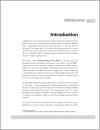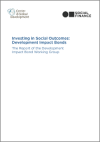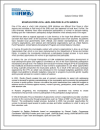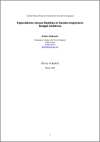FOUND 99
This publication intended for those who wish to better understand the links between gender equality, public policy formation and development financing.
Budgeting for Equity: Gender Budget Initiatives Within a Framework of Performance Oriented Budgeting
The publication discusses the tools needed to determine how a government budget impacts the different sexes. The publication achieves three objectives. First, the background of gender responsive budgets is described for readers who are not as familiar with the initiative.
The report, authored by Professor Diane Elson, a leading feminist economist, makes a significant contribution to the advocacy work on the transparency of budgets. It provides arguments for increasing the accountability of government budgets to women's rights.
A summary guide for policy makers, gender equality and human rights advocates" is a publication based on a report by Diane Elson "Budgeting for Women's Rights: Monitoring Government Budgets for Compliance with CEDAW" by UNIFEM 2006.
Budgeting for Women's Rights Monitoring Government Budgets for Compliance with CEDAW: summary..(Fr )
A summary guide for policy makers, gender equality and human rights advocates" is a publication based on a report by Diane Elson "Budgeting for Women's Rights: Monitoring Government Budgets for Compliance with CEDAW" by UNIFEM 2006.
The following document, a product of a UNIFEM supported program, is one of 7 analytical reports on Gender Responsive Budgets that were completed and published in the Follow the Money' Series, South Asia. The well-received reports, have been in wide demand by GRB practitioners from around the world.
Paper discussing the definition and measurement of Sustainable Development Goal (SDG) Indicator 5.c.1. (reclassified to Tier II) and comparing Indicator 5.c.1 with other SDG fiscal indicators.
This practical guide by Debbie Budlender and Guy Hewitt, based on experiences of past gender budget initiatives, provides a comprehensive outline of how to engender budgets.
This case study was compiled by Debbie Budlender based on presentations by Raquel Coello, and Leire Lopez, during UNIFEM/UNFPA GRB Workshops in Cape Town and Bangkok, April and June 2006.
This paper was commissioned by UNRISD as a contribution to its ongoing research project on Gender and Social Policy. The paper compares the practice of gender-responsive budget initiatives with the claims and expectations about what they can achieve.







